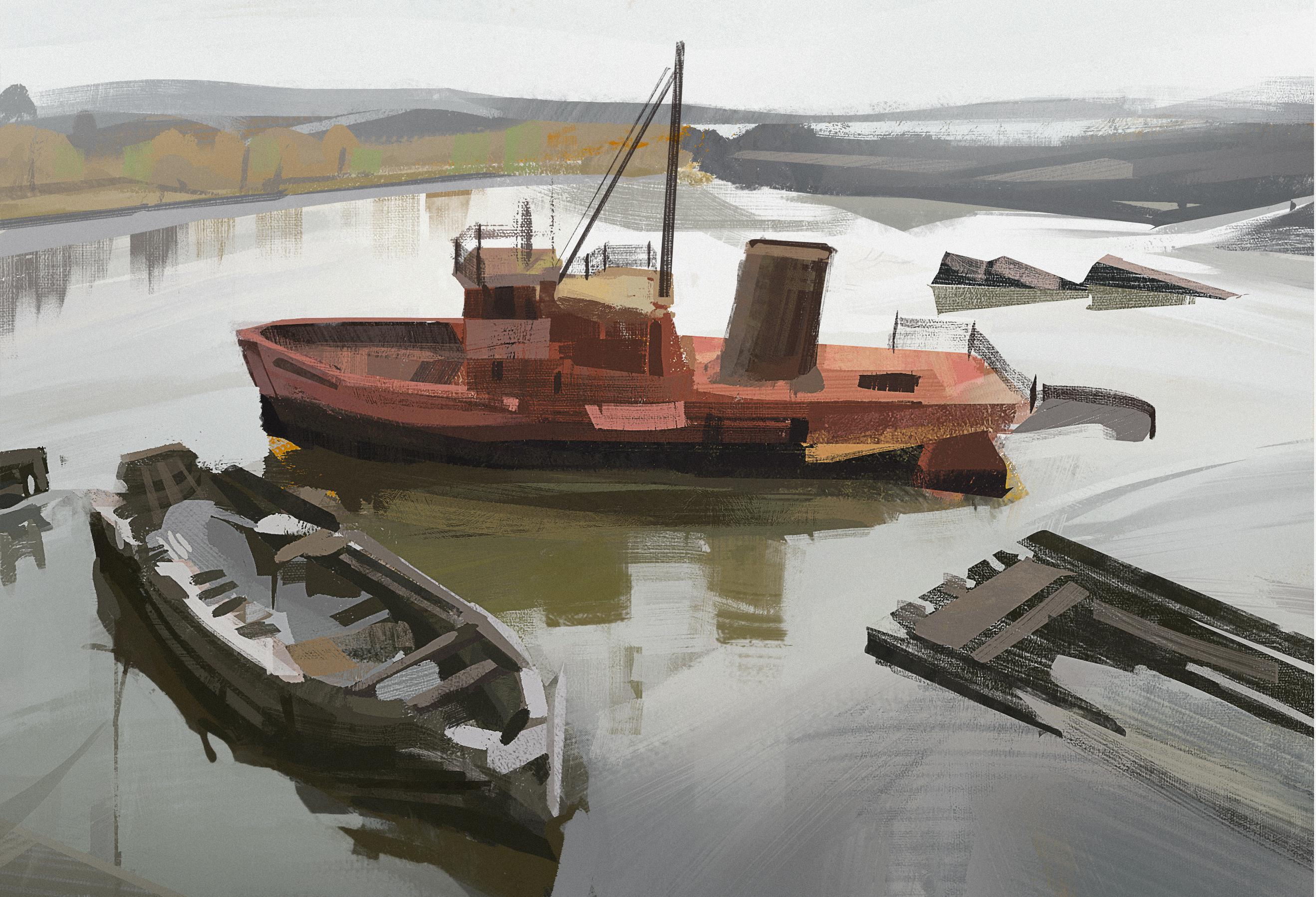Software, Poetry, Painting, and Simplicity
7 min read
July 15th, 2025
life
art
software
I’m reading Game Programming Patterns by Robert Nystrom, which opens with a question about what good software architecture looks like. As a day-to-day software engineer, the answer isn't surprising – good architecture is simple. Simple enough to be understand without much effort, and simple enough to change without much friction. That holds as true for writing games as it does writing the next ride-share app. Simplicity, however, is not straightforward. Nystrom adds in a footnote:
Blaise Pascal famously ended a letter with, 'I would have written a shorter letter, but I did not have the time.' Another choice quote comes from Antoine de Saint-Exupery: 'Perfection is achieved, not when there is nothing more to add, but when there is nothing left to take away.' Closer to home, I’ll note that every time I revise a chapter in this book, it gets shorter. Some chapters are tightened by 20% by the time they’re done.
The main takeaway of the book How to Take Smart Notes by Sonke Ahrens springs to mind – interesting ideas exist at the intersection of domains. So while I could focus on software architecture, I'm more interested in what it reveals about simplicity.
Humanity is drawn to brevity. By conveying the upper limit of function in the lower limit of form, the creator finds accomplishment; the observer, depth. What is left is the essence. The most concrete version of this might be a well-crafted poem. The poet uses mastery of language to speak volumes in a single sentence, imbued with the meter of choice. We are filled with emotion.
From W.H Auden's The More Loving One,
If equal affection cannot be,
Let the more loving one be me.
Poetry, however, isn't the only form where this reverence for economy shines. In Ted Talks - Official Guide to Public Speaking, Chris Anderson writes,
It’s certainly not the case that a shorter talk means shorter preparation time. President Woodrow Wilson was once asked about how long it took him to prepare for a speech. He replied: 'That depends on the length of the speech. If it is a 10-minute speech it takes me all of two weeks to prepare it; if it is a half-hour speech it takes me a week; if I can talk as long as I want to it requires no preparation at all. I am ready now.'
Isn't this the same principle? To say exactly what we mean, in as few words as it takes? Not because more words would be wrong, but because brevity is more powerful. The most common editorial action is deletion. Words, paragraphs, whole chapters are at risk. I should know, this article was decimated. When we are concise, each choice we make is an expression multiplier.
Expression loses clarity as content loses constraint.
A quick but imporant aside on rhetoric, the art of persuasion. Reduction, through precise diction, figure of speech, etc. is one of its many techniques. Sounding good doesn't make it right, and plenty of bad actors have knowingly simplified complex sociopolitical problems incorrectly to manipulate the masses. Socrates and Plato both hated rhetoric. They believed it was morally bankrupt and argued it didn't care for the truth. Nevertheless, rhetoric has continued to be a mainstay of human culture. So while I laude the craftsmanship that goes into simplicity, I am also wary of the weapon it can be (and has been) turned into. Simplicity is a tool, not a virtue. Now, back to the praise.
Pompo the Cinephile is an animated film from 2021. In it, we meet Pompo, a producer of hit B-grade action flicks. The star, though, is Gene, an exhausted assistant hand-picked to direct her next film. Near the end, Gene sits down to edit 72 hours of footage into 90 minutes—a constraint imposed by Pompo, who insists long runtimes are indulgent (a meta-commentary of films today). It's exasperating. There’s a bit of absurdity too, but beneath it is the meticulous search, frame by frame, for expression worth keeping.
In painting, an art form I’m very familiar with, I see the same. Painting is not photography. The beauty lies in a representation of the subject without needing every detail that composes it. Some artists strive for photorealism (and are as worthy of respect), but in the art I am drawn to, the depth lies in suggestion without exposition. A Reddit post I saved many years ago, when I had just started studying painting, was a study in brush stroke economy. I remember being in awe of a rock. It was three simple strokes – one for the light, one for the dark, and one for the reflection in the water. The master studies ten thousand strokes so that in the moment, only one is needed.

My personal process, however, is much more akin to an author's. I first paint the vision I have. Often, it includes a lot of detail, complex light-play (wordplay but using light), and as much color as I can reasonably wield. Then, I search for a purer form of the vision. I subtract -- merging shapes, losing edges, reducing detail until on clarity remains. To be clear, the clarity I speak of is not in what the eyes perceive, but what the mind envisions. My brothers are intimately aware of how I feel about phrases in speech or writing that are too on the nose, and this extends to my art as well. It's a struggle. I enjoy the work in complexity. It's technical. I could depict the human figure with such specificity, but when the detail strips the gesture, the form strips the expression. Rodin (the sculptor of The Thinker, which inspires my site's logo), upon submitting the Age of Bronze (one of the first sculptures to bring him fame) was attacked for its realism. In You Must Change Your Life (a story of Rilke and Rodin), Rachel Corbet writes,
Critics complained that The Age of Bronze was too realistic. It was a 'study rather than a statue, a too servile portait of a model without character or beauty; an astonishingly exact copy of a low type,' wrote Charles Tardeau in L'Art.
I am not the artist Rodin was, so I have no right to comment on the work's right to be art. However, I have definitely stood back after many hours painting, only realize that in obsessing over detail, I lost the essence. I suppose it is no wonder that in the art I save for inspiration, my love for less is clear.
Indulge me in one final example, in part because I have a pithy phrase befitting this article's subject. I am reading the third book in the Stormlight Archive (no spoilers here), and along the way the author introduces the character Wit. That’s not his actual name, but he’s the King’s Wit – with the freedom to take humorous jabs at folks in parties, deliver bad news to the king without repercussion, etc. I believe I am safe in saying that we, as a species, hold the characteristic of wit in high regard. It takes a certain mental awareness to respond quickly with a web of words that offend, but only slightly. Too many moments or too many words and the opportunity passes –- instead of being witty, it’s trying too hard.
If humor were an umbrella, wit would be the rib of simplicity.
You can get any new thoughts to your inbox by subscribing.
